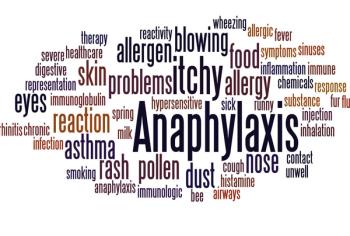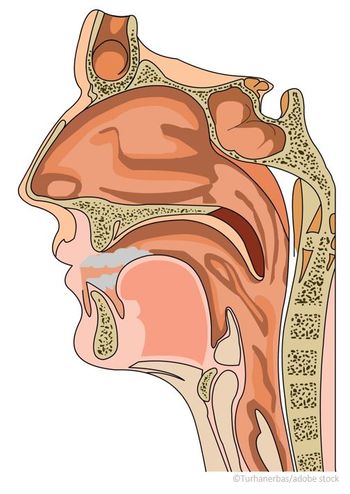
Responding to Allergic Reactions: A Photo Quiz
Spring is here and brings with it the peak allergy season. Patients will present with a variety of allergic diseases, both seasonal and otherwise. This week’s photo quiz tests your knowledge of these disorders.
Question 1:
The most common type of asthma is allergic asthma. The most important step in controlling allergen-induced asthma is to reduce exposure to the offending substances, including indoor allergens-such as animal dander, house dust mites, and indoor fungi-and outdoor allergens, such as pollen. A clinician needs to determine the patient’s exposure to allergens and sensitivity to the allergens.
NEXT QUESTION »
Question 2:
An intensely pruritic eruption that developed rapidly on both legs of a 30-year-old woman extended from the knees to the upper thighs. The eruption occurred 24 hours after she was pulling out weeds while kneeling in her garden. The papulovesicular lesions had a linear arrangement; many were excoriated.
NEXT QUESTION »
Question 3:
A 10-year-old girl with seasonal allergies has had this pruritic patch on her arm for a few days. She denies any exposure history. The patch developed with atopy as a result of colder weather and taking long, hot baths.
NEXT QUESTION »
For the answer, click here.
Question 4:
A 72-year-old woman sees her primary care physician because she has an itchy facial rash of 1 week’s duration. She reports that redness and scaling had developed on her cheek and that vitamin E oil she applied to the area may have made it worse. Possible causes of the rash include an allergic reaction to the vitamin E oil, a flare of seborrhea, a flare of rosacea, and contact dermatitis that is not responding to vitamin E.
NEXT QUESTION »
Question 5:
Circumscribed erythematous lesions developed on the back and abdomen of this 19-month-old boy. The rash was mildly pruritic. His parents gave him 1 dose of diphenhydramine, and the rash resolved after an hour. About 12 hours later, new lesions developed on the face, neck, and upper back. He was given the same treatment, and the symptoms resolved. The next morning, widespread lesions were noted on his face, neck, trunk, and extremities.
The recurrent lesions are characteristic of the boy’s condition. Causes include aeroallergens/contact allergens.
NEXT QUESTION »
Question 6:
A 72-year-old woman noted the recent appearance of swelling and itching every time she used her favorite lipstick. She is allergic to an ingredient in the cosmetic.
Patch testing should be performed to determine the specific allergen responsible.
NEXT QUESTION »
Question 7:
This bright-eyed young person shows no edema of lids, no blepharoconjunctivitis, and no chemosis. Her mouth is closed, so it may be inferred that she is nose-breathing. She has pressed her right palm against the tip of her nose, pushing it toward her midface to compress the nose and widen the external aperture of each naris. There are faint darkenings of skin beneath each eye. She has allergic rhinitis.
ANSWER KEY »
ANSWER KEY:
Question 1. E
Question 2. A
Question 3. E
Question 4. D
Question 5. C
Question 6. D
Question 7. C
Newsletter
Enhance your clinical practice with the Patient Care newsletter, offering the latest evidence-based guidelines, diagnostic insights, and treatment strategies for primary care physicians.

























































































































































































































































































